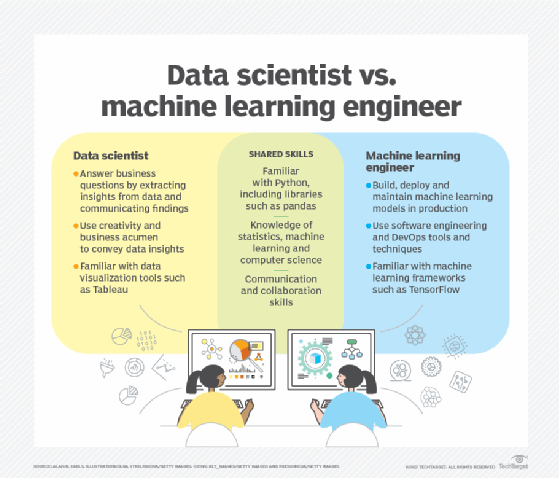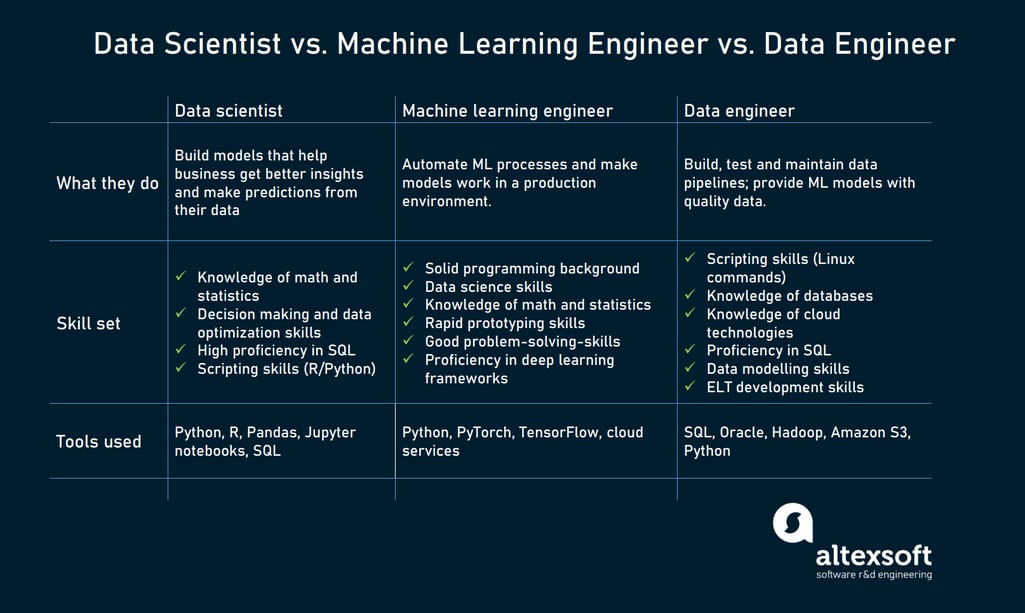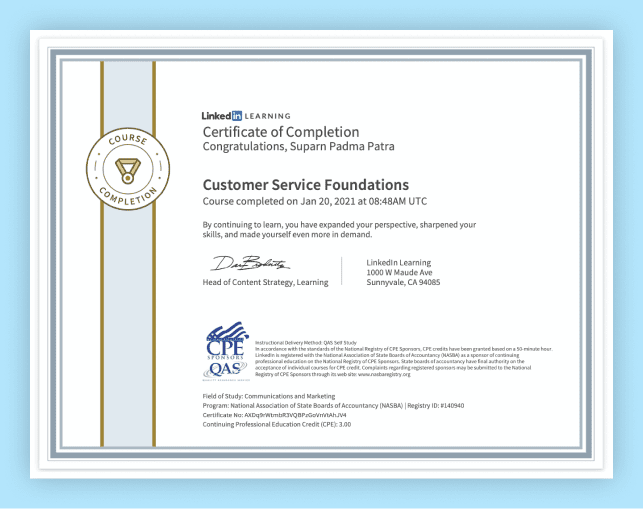All Categories
Featured
Table of Contents
- – The Ultimate Guide To Online Machine Learning ...
- – 3 Easy Facts About Machine Learning Engineer C...
- – How Professional Ml Engineer Certification - ...
- – Things about Machine Learning In Production
- – 5 Simple Techniques For How I Went From Soft...
- – The What Is A Machine Learning Engineer (Ml ...
- – Some Of 7-step Guide To Become A Machine Lea...
Some people believe that that's unfaithful. If someone else did it, I'm going to utilize what that person did. I'm forcing myself to think with the possible options.
Dig a little bit deeper in the math at the beginning, just so I can build that structure. Santiago: Lastly, lesson number 7. I do not think that you have to comprehend the nuts and screws of every formula prior to you use it.
I've been making use of semantic networks for the longest time. I do have a feeling of just how the slope descent functions. I can not explain it to you today. I would certainly need to go and inspect back to actually obtain a better instinct. That doesn't indicate that I can not resolve points making use of neural networks? (29:05) Santiago: Trying to force people to think "Well, you're not going to succeed unless you can clarify every detail of exactly how this functions." It returns to our arranging example I assume that's just bullshit advice.
As a designer, I have actually dealt with many, several systems and I have actually made use of numerous, lots of things that I do not comprehend the nuts and screws of how it works, although I understand the effect that they have. That's the last lesson on that thread. Alexey: The funny point is when I believe about all these collections like Scikit-Learn the formulas they make use of inside to carry out, for example, logistic regression or another thing, are not the same as the formulas we research in machine understanding classes.
The Ultimate Guide To Online Machine Learning Engineering & Ai Bootcamp
So even if we tried to discover to get all these basics of machine knowing, at the end, the formulas that these collections use are various. ? (30:22) Santiago: Yeah, absolutely. I believe we need a great deal a lot more pragmatism in the sector. Make a lot more of an effect. Or concentrating on providing worth and a little less of purism.

Incidentally, there are two different courses. I usually speak with those that wish to function in the industry that wish to have their effect there. There is a course for scientists and that is completely various. I do not dare to talk about that because I do not understand.
Right there outside, in the industry, materialism goes a long way for certain. Santiago: There you go, yeah. Alexey: It is a good inspirational speech.
3 Easy Facts About Machine Learning Engineer Course Explained
One of the points I wanted to ask you. First, allow's cover a pair of points. Alexey: Let's start with core devices and structures that you need to learn to really transition.
I recognize Java. I know SQL. I know exactly how to utilize Git. I understand Celebration. Maybe I understand Docker. All these points. And I find out about artificial intelligence, it looks like a trendy thing. So, what are the core tools and frameworks? Yes, I viewed this video and I get convinced that I do not require to obtain deep into math.
What are the core devices and frameworks that I require to find out to do this? (33:10) Santiago: Yeah, definitely. Great inquiry. I believe, number one, you must start discovering a little bit of Python. Considering that you currently know Java, I don't think it's going to be a huge transition for you.
Not due to the fact that Python is the same as Java, but in a week, you're gon na obtain a lot of the distinctions there. You're gon na be able to make some progress. That's top. (33:47) Santiago: Then you get specific core devices that are going to be made use of throughout your entire profession.
How Professional Ml Engineer Certification - Learn can Save You Time, Stress, and Money.
You get SciKit Learn for the collection of machine learning algorithms. Those are devices that you're going to have to be making use of. I do not recommend just going and finding out concerning them out of the blue.
We can speak about certain programs later on. Take among those programs that are going to begin introducing you to some issues and to some core concepts of device learning. Santiago: There is a course in Kaggle which is an introduction. I do not bear in mind the name, but if you most likely to Kaggle, they have tutorials there totally free.
What's good about it is that the only demand for you is to recognize Python. They're mosting likely to offer a problem and inform you exactly how to use choice trees to resolve that certain problem. I assume that process is extremely effective, due to the fact that you go from no machine learning history, to understanding what the issue is and why you can not address it with what you know now, which is straight software program engineering methods.
Things about Machine Learning In Production
On the various other hand, ML engineers concentrate on building and releasing equipment discovering versions. They concentrate on training models with information to make forecasts or automate jobs. While there is overlap, AI designers handle even more diverse AI applications, while ML designers have a narrower focus on artificial intelligence formulas and their practical application.

Artificial intelligence designers focus on developing and releasing machine knowing versions into production systems. They work with engineering, making certain versions are scalable, reliable, and incorporated into applications. On the other hand, data scientists have a broader role that consists of data collection, cleansing, exploration, and building designs. They are typically in charge of extracting understandings and making data-driven decisions.
As companies increasingly adopt AI and equipment discovering technologies, the demand for proficient experts expands. Maker learning engineers work on advanced jobs, add to innovation, and have competitive salaries. Success in this area requires continuous discovering and keeping up with evolving technologies and methods. Artificial intelligence roles are generally well-paid, with the potential for high earning potential.
ML is essentially different from typical software development as it focuses on teaching computers to gain from data, rather than programs specific rules that are performed systematically. Uncertainty of end results: You are most likely made use of to creating code with predictable outcomes, whether your feature runs as soon as or a thousand times. In ML, however, the outcomes are less certain.

Pre-training and fine-tuning: How these designs are trained on huge datasets and then fine-tuned for certain jobs. Applications of LLMs: Such as text generation, sentiment evaluation and information search and access. Documents like "Focus is All You Required" by Vaswani et al., which presented transformers. Online tutorials and programs concentrating on NLP and transformers, such as the Hugging Face course on transformers.
5 Simple Techniques For How I Went From Software Development To Machine ...
The capacity to handle codebases, merge changes, and fix problems is simply as vital in ML development as it remains in traditional software application projects. The skills developed in debugging and testing software program applications are extremely transferable. While the context could transform from debugging application logic to recognizing concerns in data processing or model training the underlying concepts of systematic examination, theory screening, and iterative refinement are the same.
Artificial intelligence, at its core, is greatly dependent on statistics and probability concept. These are crucial for recognizing exactly how formulas pick up from information, make forecasts, and evaluate their efficiency. You should think about becoming comfortable with principles like analytical significance, circulations, theory testing, and Bayesian thinking in order to layout and analyze versions efficiently.
For those interested in LLMs, a thorough understanding of deep knowing styles is helpful. This consists of not only the technicians of semantic networks however also the architecture of specific models for different usage situations, like CNNs (Convolutional Neural Networks) for image handling and RNNs (Recurrent Neural Networks) and transformers for consecutive information and natural language handling.
You should know these issues and discover methods for recognizing, reducing, and connecting about prejudice in ML designs. This includes the possible influence of automated choices and the ethical ramifications. Lots of versions, specifically LLMs, require substantial computational sources that are typically offered by cloud platforms like AWS, Google Cloud, and Azure.
Structure these skills will certainly not just help with an effective transition right into ML yet additionally ensure that designers can add efficiently and properly to the advancement of this dynamic area. Theory is essential, however absolutely nothing beats hands-on experience. Beginning servicing jobs that permit you to apply what you've learned in a useful context.
Build your tasks: Begin with straightforward applications, such as a chatbot or a text summarization tool, and progressively enhance intricacy. The field of ML and LLMs is quickly evolving, with new advancements and technologies arising routinely.
The What Is A Machine Learning Engineer (Ml Engineer)? Ideas
Contribute to open-source jobs or compose blog messages regarding your knowing journey and jobs. As you get competence, begin looking for possibilities to incorporate ML and LLMs into your work, or seek new duties focused on these technologies.

Vectors, matrices, and their role in ML formulas. Terms like design, dataset, attributes, labels, training, inference, and recognition. Data collection, preprocessing techniques, model training, assessment processes, and deployment factors to consider.
Decision Trees and Random Forests: User-friendly and interpretable versions. Support Vector Machines: Optimum margin classification. Matching issue kinds with proper models. Stabilizing efficiency and intricacy. Fundamental framework of semantic networks: nerve cells, layers, activation features. Split calculation and forward breeding. Feedforward Networks, Convolutional Neural Networks (CNNs), Frequent Neural Networks (RNNs). Image recognition, sequence prediction, and time-series analysis.
Information circulation, transformation, and feature engineering strategies. Scalability principles and performance optimization. API-driven strategies and microservices assimilation. Latency management, scalability, and version control. Constant Integration/Continuous Implementation (CI/CD) for ML workflows. Version tracking, versioning, and performance monitoring. Finding and resolving adjustments in model efficiency in time. Addressing efficiency bottlenecks and source monitoring.
Some Of 7-step Guide To Become A Machine Learning Engineer In ...

You'll be introduced to 3 of the most appropriate parts of the AI/ML self-control; supervised discovering, neural networks, and deep understanding. You'll comprehend the differences between traditional programs and device understanding by hands-on growth in monitored learning prior to building out complex distributed applications with neural networks.
This program works as an overview to maker lear ... Show Much more.
Table of Contents
- – The Ultimate Guide To Online Machine Learning ...
- – 3 Easy Facts About Machine Learning Engineer C...
- – How Professional Ml Engineer Certification - ...
- – Things about Machine Learning In Production
- – 5 Simple Techniques For How I Went From Soft...
- – The What Is A Machine Learning Engineer (Ml ...
- – Some Of 7-step Guide To Become A Machine Lea...
Latest Posts
Cracking The Mid-level Software Engineer Interview – Part I (Concepts & Frameworks)
Top Software Engineering Interview Questions And How To Answer Them
The Ultimate Guide To Preparing For An Ios Engineering Interview
More
Latest Posts
Cracking The Mid-level Software Engineer Interview – Part I (Concepts & Frameworks)
Top Software Engineering Interview Questions And How To Answer Them
The Ultimate Guide To Preparing For An Ios Engineering Interview